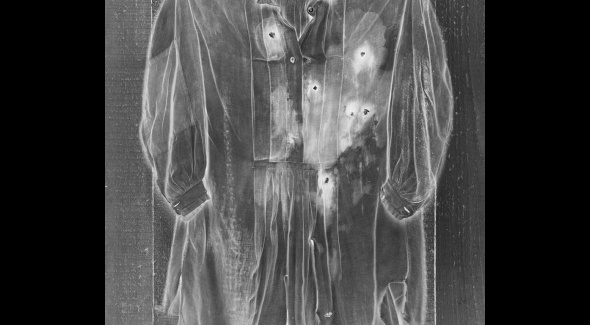Patrick Bailly Maître Grand
After studying science (MA in Physical Science, 1969) and devoting ten years to painting, Patrick Bailly-Maître-Grand has been working with photography and photographic techniques since 1980. His work, strictly analogue, black and white gelatin-silver based, is characterized by a playful imagination, combined with a taste for complex technologies such as the Daguerreotype, peripheral photography, strobe photography, chemical toning, direct monotypes, rayographs and other inventions of his own making.
Fleeing the notion of perspective, his images, although very sophisticated in terms of their elaboration, are as simple as visual proverbs, as minimal as haikus.
Patrick Bailly-Maître-Grand has exhibited worldwide and his works feature in the collections of prestigious museums such as MoMA, New York, the Pompidou Centre, Paris, the Fonds National d'Art Contemporain, the Victoria Museum, Melbourne, the Sainsbury Centre for Visual Arts, Norwich (UK), the Musée d'Art Moderne et Contemporain, Strasbourg, and the Museet for Fotokunst, Odense, etc.
Obviously, the idea of being a “guest artist/teacher” at the Studio National des Arts Contemporains du Fresnoy is one that plunges me into a state of equal parts excitement and terror. Excitement because this will be a great opportunity for me to rub shoulders with a handful of the elite of our creative youth, but also terror, for fear of finding myself old-hat and consequently snubbed, with my “old-school” photographic tools, especially when nowadays they all seem to play with pixel images as if they were manipulating a Rubik's cube.
Still, chin up! From my sinking ship, with my bag packed full of chemical and optical paraphernalia, and hardware-store abracadabras, I’m going to board their brand new ship and show them what photographic wood we can use to keep ourselves warm! Maybe I could even convince some of them to mutiny!
What general direction should I give to my classes with this handful of students? I think the most unsettling or confusing thing about analogue photography is the unavoidable notion of an imprint or trace (such as a veritable mould applied to reality), as opposed to the actual borrowing from reality which digital photography does, in order to then (cf. the twisting of the Rubik’s cube) produce… computer graphics. Therefore with these students at Le Fresnoy, we shall thoroughly explore this notion of a photographic imprint (or trace) using the direct monotype, the rayograph, moulding intermediary resins and, perhaps other techniques of physical recording yet to be invented. In short, we shall all put our noses to the grindstone rather than parking our derrières in front of the computer.




